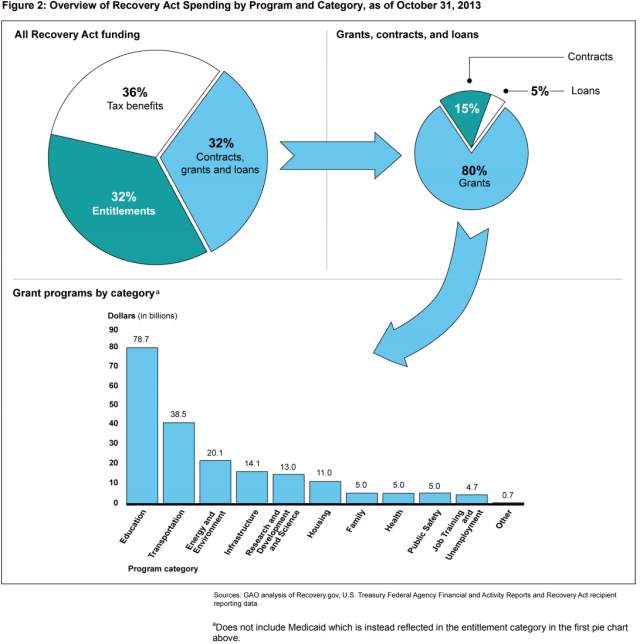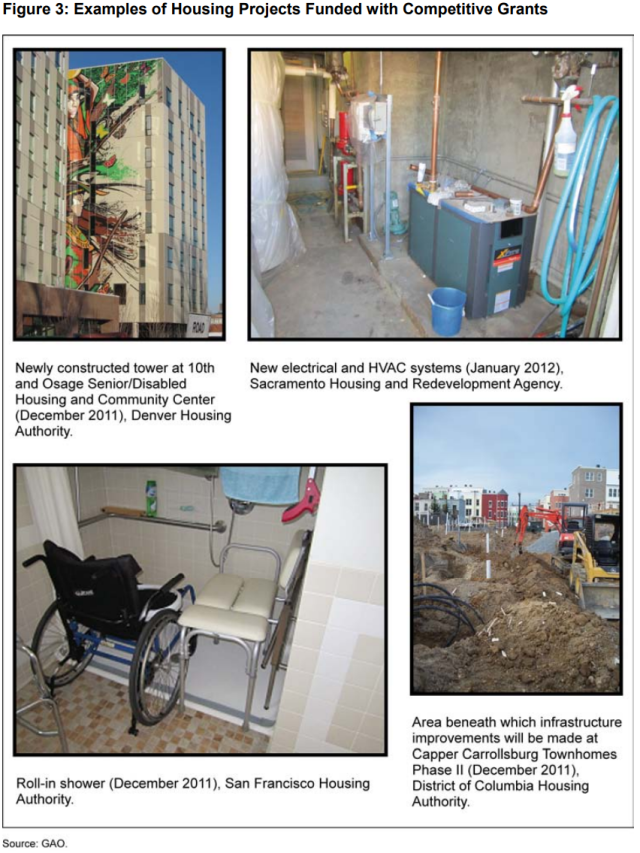The Legacy of the Recovery Act
Ten years ago this month, Congress responded to the most serious economic crisis since the Great Depression by passing the American Recovery and Reinvestment Act of 2009 (Recovery Act).
This economic stimulus package, estimated to cost more than $800 billion, intended to promote economic recovery by:
- Preserving and creating jobs
- Assisting those most impacted by the recession
- Providing investments for increasing economic efficiency by spurring advances in science and health technology
- Investing in transportation, environmental protection, and other infrastructure; and
- Stabilizing state and local government budgets to avoid reductions in services and state and local tax increases
So, ten years on, what do we know about the effects of the Recovery Act? Today’s WatchBlog explores GAO’s work related to the scope of the Recovery Act and longer-term effects on the transparency of federal spending.
Spending and accountability
Starting in 2009, Recovery Act funds were distributed to federal agencies, states, localities, for-profit corporations and nonprofit organizations, as well as to individuals through grants, contracts, loans, tax benefits, and other assistance. Many Recovery Act projects focused on immediately jumpstarting the economy. Others, such as those focused on technology, infrastructure, and the environment, were expected to contribute to economic growth for many years.
Grants played a key role in the Recovery Act—states and localities received about $219 billion through federal grant programs for health care, transportation, energy, housing, and education. These grants came with aggressive timelines for spending the money quickly to create and retain jobs and stabilize state and local budgets.
Funding recipients were also required to publicly report on how they used Recovery Act funds to ensure transparency and accountability.
Following the money
Starting in 2009, we have conducted in-depth reviews of Recovery Act programs in 16 states, the District of Columbia, and selected localities—which encompassed about two-thirds of Recovery Act funds and 65 percent of the U.S. population.
Our work reviewed numerous programs in areas such as Highway Infrastructure and Public Transportation, Health Care, Energy, Public Housing, and Education.
We identified challenges and successes that federal, state, and local governments had in meeting the Recovery Act’s accountability and transparency requirements. For example, while the act required the creation of the Recovery.gov website, which demonstrated several leading practices for effective government websites, some agencies struggled with meeting the act’s oversight requirements due to lack of funding for oversight at the state and local levels, staffing shortages, and the short timelines for spending the funding.
A lasting legacy
The Recovery Act also paved the way for legislation that changed the standards for the transparency of government spending. Congress passed the Digital Accountability and Transparency Act of 2014 (the DATA Act), partly due to lessons learned from the Recovery Act.
The DATA Act requires federal agencies to prepare and submit standardized, accurate information about the trillions of dollars they spend each year.
We’ve reported on a number of issues related to the DATA Act, including a lack of accuracy and consistency in how agencies report their data, and we continue to monitor its implementation.
To learn more, visit our website.
Comments on GAO’s WatchBlog? Contact blog@gao.gov.







